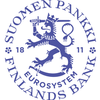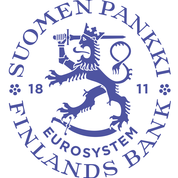Population ageing and weak productivity are blunting Finland’s longer term growth outlook

Steeply rising energy and food prices, supply bottlenecks and the post-pandemic recovery in demand have added considerably to price pressures, driving up inflation in the euro area and in Finland to levels that are far too high. In October, the inflation rate in the euro area was already 10.7%. This is why monetary policy is being tightened after several years of an accommodative monetary policy stance.
“In the Governing Council of the European Central Bank, we began the process of normalising monetary policy back in December 2021. That process is now being taken forward consistently and purposefully to ensure that over the medium term inflation stabilises at the 2% target we have set,” explains Governor of the Bank of Finland Olli Rehn.
Before starting to raise interest rates in July, the ECB’s most important policy rate was negative: ‑0.5%. This deposit facility rate is currently at 1.5%. Key ECB interest rates are likely to be raised still further. The pace at which this is done will depend on the inflation rate and the economic situation.
Regarding the challenges faced by Finland, there are two areas that cannot be ignored: the public finances and the longer term growth outlook. The International Monetary Fund emphasised last week that over the medium term, a substantial fiscal consolidation is needed in Finland’s public finances to put the debt ratio on a declining path in the medium term. “In Finland, we have a fairly sound welfare state − despite its shortcomings – but at present too small an economy to carry it. The shifting age structure and climate change are no longer future or long-term challenges alone, as their impacts are already visible,” says Governor Rehn.
Fiscal balance requires active measures affecting both revenues and expenditures. Unless we change direction, the structural deficit, the growing level of interest expenditure and age-related expenditures will lead to over-indebtedness in the economy. The aim should be longer term debt sustainability, and targets should be set accordingly.
If the current demographic and education trends continue, human capital in Finland will begin to decline in the 2040s. “An educated and skilled labour force has traditionally been one of our strengths, but in the future this will become a major challenge as a shortfall develops as it develops into a serious growth bottleneck. The ageing of the labour force and the weakening of the elderly dependency ratio will limit the supply of skilled labour in many sectors and occupations,” says Rehn. The availability of labour will be a key issue for Finland with its ageing population, and this will place particular demands on the operation of the labour market and on the education system and work-based immigration.
Governor Olli Rehn’s speech to Parliament’s Commerce Committee:
Pääjohtaja Olli Rehn: Euroopan ja Suomen talous sodan ja energiakriisin varjossa (suomenpankki.fi)
Keywords
Images
Links
About Suomen Pankki
The Bank of Finland is the national monetary authority and central bank of Finland. At the same time, it is also a part of the Eurosystem, which is responsible for monetary policy and other central bank tasks in the euro area and administers use of the world’s second largest currency – the euro.
Subscribe to releases from Suomen Pankki
Subscribe to all the latest releases from Suomen Pankki by registering your e-mail address below. You can unsubscribe at any time.
Latest releases from Suomen Pankki
IMF:s kommentarer om Finlands ekonomi10.11.2025 15:30:00 EET | Pressmeddelande
Internationella valutafonden (IMF) offentliggjorde sina kommentarer om Finlands ekonomi måndagen den 10 november.
IMF:n lausunto Suomen taloudesta10.11.2025 15:30:00 EET | Tiedote
Kansainvälinen valuuttarahasto (IMF) julkisti lausuntonsa Suomen taloudesta maanantaina 10. marraskuuta.
The IMF’s concluding statement on the Finnish economy10.11.2025 15:30:00 EET | Press release
The International Monetary Fund (IMF) published its concluding statement on the Finnish economy on Monday 10 November.
Den kinesiska ekonomin mattas av under 2025–202710.11.2025 13:00:00 EET | Pressmeddelande
Enligt Finlands Banks forskningsinstitut för tillväxtmarknader BOFIT har den ekonomiska tillväxten i Kina mattats av under de senaste månaderna efter att ha varit starkare än väntat i början av året.
Kiinan talous kasvaa nykyistä hitaammin vuosina 2025–202710.11.2025 13:00:00 EET | Tiedote
Suomen Pankin nousevien talouksien tutkimuslaitoksen BOFITin mukaan Kiinan talouskasvu on hidastunut viime kuukausina odotettua vahvemman alkuvuoden jälkeen.
In our pressroom you can read all our latest releases, find our press contacts, images, documents and other relevant information about us.
Visit our pressroom

